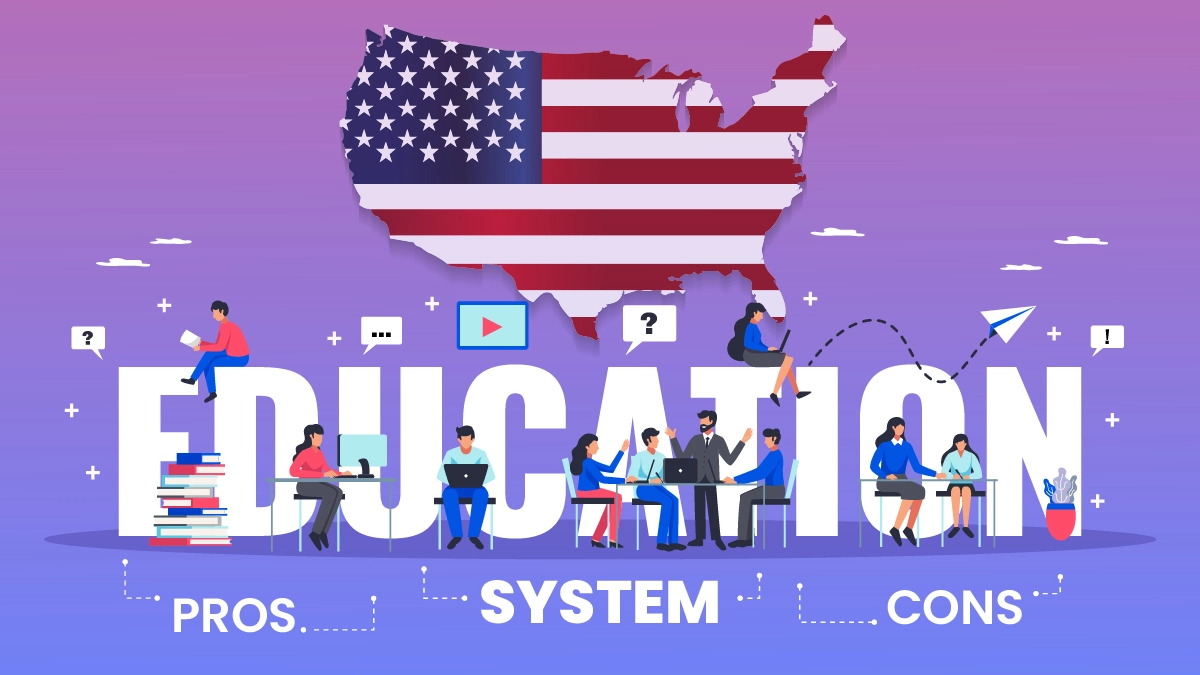The US Education System: Challenges, Innovations, and Opportunities
The U.S. schooling system is one of the most comprehensive and diverse in the world, spanning from early education to higher learning and lifelong opportunities. With its decentralized structure and emphasis on both public and private schooling, the U.S. system has traditionally been a model for innovation. However, it also faces significant challenges that need to be addressed to better prepare future generations for an increasingly fast-paced and interconnected global environment. This article explores the current state of the U.S. education system, its challenges, and the opportunities for growth.
Overview of the U.S. Education System
The U.S. education system operates at three primary levels:
Elementary and Secondary Education: Public schools provide free education to children from kindergarten through 12th grade. Education at this level is mandatory, with oversight provided by state and local governments.
Higher Education: Colleges, universities, and community colleges offer postsecondary education, including undergraduate, graduate, and professional programs.
Vocational and Lifelong Learning: Technical schools, adult education programs, and online platforms offer skills training and continuing education opportunities.
The federal government plays a limited role, primarily providing funding for specific programs and ensuring equal access to education for all students.
Strengths of the U.S. Education System
Diversity and Flexibility
One of the key strengths of the U.S. system is its diversity and flexibility. Students have access to a wide range of educational options, including public, private, charter, and magnet schools. Higher education institutions offer an extensive variety of degrees and programs, catering to students with different career aspirations.Top-Notch Universities
The U.S. is home to some of the world’s most renowned universities, including Harvard, Stanford, and MIT. These institutions lead in research and innovation, attracting students and faculty from all over the world.Focus on Personal Development
The U.S. education system encourages critical thinking, creativity, and individuality. Schools often offer extracurricular activities like sports, music, and the arts, contributing to the holistic development of students.
Challenges Facing the U.S. Education System
Despite its strengths, the U.S. education system faces several significant challenges that hinder its effectiveness and equity.
Educational Inequality
One of the most pressing issues is the disparity in educational resources between wealthy and underserved communities. Schools in wealthier areas often have better facilities, experienced teachers, and cutting-edge technology, while those in low-income areas struggle with underfunding.Example: According to a 2023 report by the National Center for Education Statistics, schools in low-income areas receive significantly less funding per student than those in wealthier regions, leading to disparities in academic outcomes.
Rising Costs of Higher Education
The cost of higher education in the U.S. has skyrocketed in recent decades, contributing to a student debt crisis. Many students graduate with substantial debt, affecting their financial stability and limiting their opportunities.Key Insights:
- As of 2024, student loan debt in the U.S. has surpassed $1.8 trillion.
- The average college graduate owes over $30,000 in student loans.
Teacher Shortages and Burnout
The U.S. is experiencing a nationwide teacher shortage, exacerbated by low salaries, lack of support, and increasing demands on educators. Many teachers report burnout, leading to high turnover rates.Fact: A 2022 survey by the National Education Association found that 55% of teachers were considering leaving the profession sooner than planned due to stress.
Standardized Testing Pressure
The heavy reliance on standardized tests to measure student performance and school effectiveness has been criticized for narrowing the focus of education, emphasizing test preparation over deeper subject understanding.Declining Literacy and Math Scores
Recent assessments, such as the National Assessment of Educational Progress (NAEP), have revealed declining literacy and math scores among U.S. students, particularly following the COVID-19 pandemic. These trends raise concerns about the overall quality of education.
Innovations and Opportunities in U.S. Education
Despite these challenges, the U.S. education system is evolving through innovations aimed at improving access, quality, and outcomes.
Technology Integration
The integration of technology into classrooms has revolutionized teaching and learning. Tools like interactive whiteboards, learning management systems, and educational apps enhance student engagement and personalized learning.Example: Khan Academy, an online platform offering free courses, has become a valuable resource for students worldwide, particularly during the pandemic.
Focus on STEM Education
To prepare students for a technology-driven world, schools are placing an increasing emphasis on STEM (science, technology, engineering, and mathematics) education. Programs like FIRST Robotics and Girls Who Code encourage students to pursue careers in these fields.Expansion of Early Education
Research has shown that early education significantly impacts long-term academic and social outcomes. Many states are expanding access to pre-K programs to ensure that children start school ready to learn.Fact: The federal government increased funding for Head Start programs by 15% in 2023 to support low-income families.
Social-Emotional Learning (SEL)
Schools are increasingly incorporating social-emotional learning into their curricula to address mental health challenges and build emotional intelligence. SEL helps students manage stress, build relationships, and make responsible decisions.Online and Hybrid Learning
The pandemic accelerated the adoption of online and hybrid learning models. These approaches offer flexibility for students and have the potential to reach underserved populations.
The Role of Policy and Community in Improving Education
Increasing Funding for Public Schools
Policymakers need to prioritize equitable funding for public schools, ensuring that all students have access to high-quality resources, regardless of their socioeconomic background.Example: California implemented a “Local Control Funding Formula” that allocates additional resources to schools serving low-income students, English learners, and foster youth.
Addressing the Student Debt Crisis
Reforming higher education costs and providing debt relief is crucial. Proposals like increasing federal Pell Grants and forgiving student loans for certain professions can ease the burden on students.Supporting Teachers
Investing in teacher salaries, professional development, and mental health support can address teacher shortages and improve retention.Promoting Inclusivity and Diversity
Schools should create inclusive environments that celebrate diversity and ensure equitable opportunities for all students, including those with disabilities and from minority backgrounds.Fostering Community Engagement
Strong partnerships between schools, parents, and local communities can enhance education. Volunteer programs, mentorship initiatives, and after-school activities can support student success.
Looking Ahead: The Future of U.S. Education
The U.S. education system stands at a crossroads. To thrive in the 21st century, it must adapt to the changing needs of students, the economy, and society. By addressing current challenges and embracing innovation, the system can fulfill its mission of providing high-quality education for all.
Key priorities for the future include:
- Expanding access to affordable education at all levels.
- Using technology to close achievement gaps.
- Preparing students for a rapidly changing job market.
- Fostering global citizenship and cultural understanding.
The road ahead requires collaboration among policymakers, educators, parents, and communities. Together, they can build an education system that empowers every student to reach their full potential.
Conclusion
In conclusion, the U.S. education system is a dynamic and essential institution with enormous potential for positive impact. By addressing its challenges and leveraging its strengths, it can continue to shape a brighter future for individuals and society as a whole.



